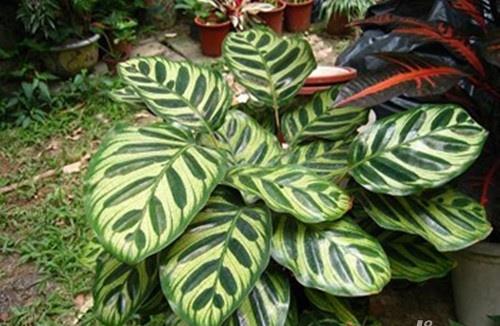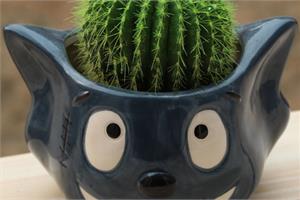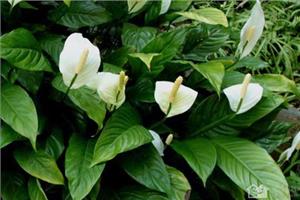Brief introduction of Peacock Bamboo Taro matters needing attention
What kind of plant is peacock bamboo taro? Peacock bamboo taro is a master of removing ammonia pollution in the air, except formaldehyde is half of that of hanging orchid, but it is also much higher than ordinary plants. Let's take a look at the brief introduction of peacock bamboo taro and the matters needing attention.
Brief introduction of Peacock Bamboo Taro
Peacock bamboo taro is a perennial evergreen herb. The leaf is 30-60 cm high, the leaf is 15-20 cm long and 5-10 cm wide, oval-shaped, thin, leathery, petiole purplish red. The green leaves are faintly metallic and bright, and there are pinnate, dark green and long oval velvet patches along both sides of the midrib, arranged alternately from left to right. The leaf back is purplish red.
Peacock bamboo taro prefers semi-shade, is not resistant to direct sunlight, and adapts to growing in a warm and humid environment. The cultivation should be shaded to a certain extent, and the temperature should be kept at about 12 ℃, and the temperature in winter should be maintained at 16 ℃. The growth is exuberant in spring and summer, which requires higher air humidity and can be sprayed. The soil is not very strict, but it is required to keep moderately moist. In the growing season, fertilizer is applied once every two weeks, while the soil can be slightly dry and cool in winter, and the number of fertilization is reduced. The method of root separation is often used in reproduction. In the early summer season, the main pests are pink fleas, red spiders, aphids, shell insects and so on.

Culture method of Peacock Bamboo Taro
Pot cultivation of peacock bamboo taro should use loose, fertile, well-drained, humus-rich slightly acidic loam, generally can be mixed with 3 parts of rotten leaf soil, 1 part of peat or sawdust, 1 part of sand, and add a small amount of bean cake as base fertilizer, avoid heavy and sticky garden soil. When putting on the basin, the bottom of the basin is first padded with 3 inch thick coarse sand as a drainage layer to facilitate drainage.
Adequate moisture should be given during the growing period, especially in summer and autumn, in addition to keeping the basin soil moist, it is also necessary to spray water to the leaves to cool and moisturize; it requires a higher air humidity, preferably up to 70% to 80%; avoid dry air and dry basin soil, but do not accumulate water. Moisture should be controlled after the end of autumn in order to resist cold and survive the winter. Keep the dry environment in winter, if it is too wet, the basal leaves will be yellow and scorched, which will affect its ornamental value.
From May to September, the growing season should be placed in a shady or semi-shady place to maintain a light transmittance of 40% and 60%, so as to avoid direct sunlight. Excessive light or dry air can easily lead to scorched leaf tips and dull leaf markings; but the light should not be too weak. If placed in a dark room for a long time, the temperature is low and the light is insufficient, it will also grow weak, not conducive to the formation of leaf color and lose the unique metallic luster of the leaf. Direct sunlight through glass is acceptable in winter.
Points for attention of Peacock Bamboo Taro
Peacock bamboo taro likes high temperature and humid air, and grows fastest when it is more than 20 ℃. In the low temperature season from October to April of the following year, the north should move into the greenhouse to overwinter, and the winter overwintering temperature should not be lower than 15 ℃, otherwise the leaves are dark, the leaves curl and the leaf tips are yellow. if the freezing is slight, the environmental conditions can be changed in time, and new leaves can still be sent out in the coming spring. If the leaves are severely frozen, they die one after another, or even the whole plant dies.
Plant peacock taro if the indoor temperature difference between day and night can be covered with plastic film or insulated and moisturized with glass box, and wash the leaves with warm water once a month to maintain the color of the leaves. Every spring, when the temperature rises steadily to 20 ℃, the pot can be changed once. When changing the pot, new culture soil should be added, and the residual roots and leaves should be cut off and replanted to facilitate growth.
The above is the introduction of this article, I believe you have a simple understanding after reading it, if necessary, you can continue to pay attention to the No. 1 home network for more information.
Related
- Wuhan Hospital Iron Tree Blooming Result Was Instantly Frightened by the Gardener Master
- Which variety of camellia is the most fragrant and best? Which one do you like best?
- What is the small blue coat, the breeding methods and matters needing attention of the succulent plant
- Dormancy time and maintenance management of succulent plants during dormancy
- Minas succulent how to raise, Minas succulent plant pictures
- What are the varieties of winter succulent plants
- How to raise succulent plants in twelve rolls? let's take a look at some experience of breeding twelve rolls.
- Attention should be paid to water control for succulent plants during dormant period (winter and summer)
- Watering experience of twelve rolls of succulent plants
- Techniques for fertilizing succulent plants. An article will let you know how to fertilize succulent plants.



